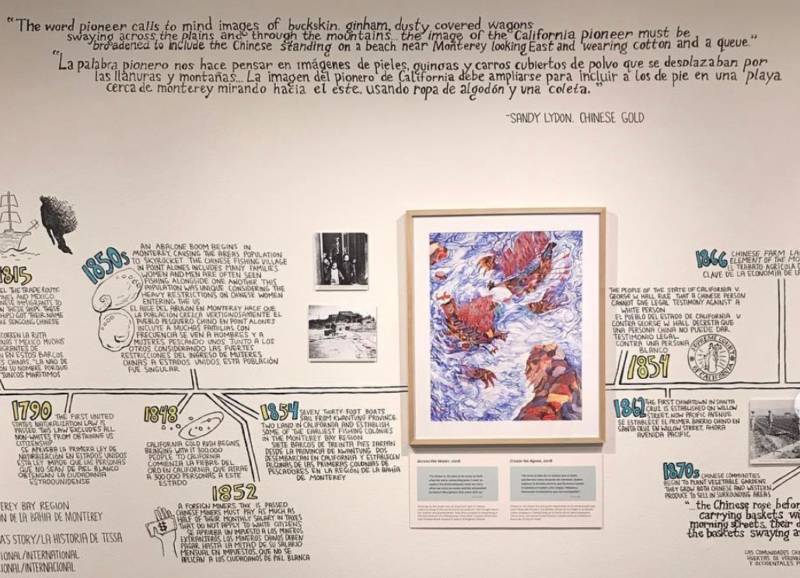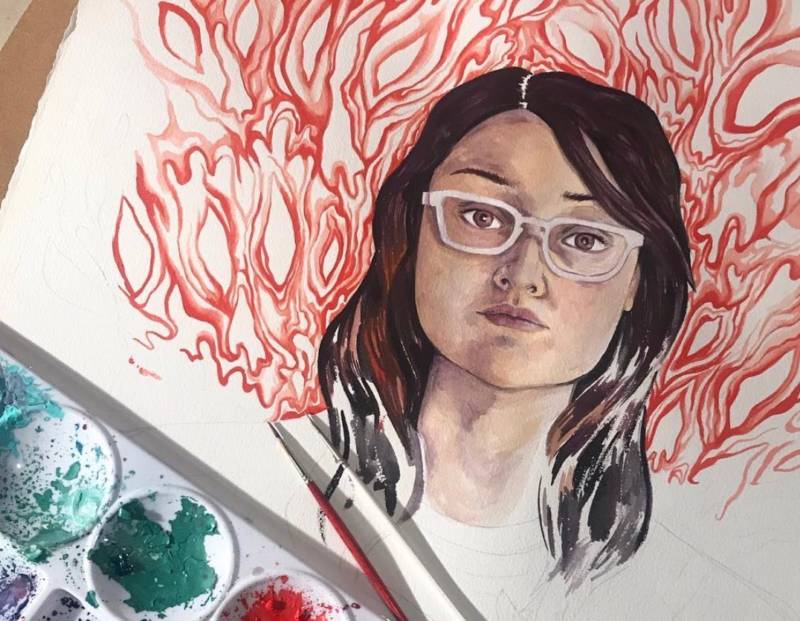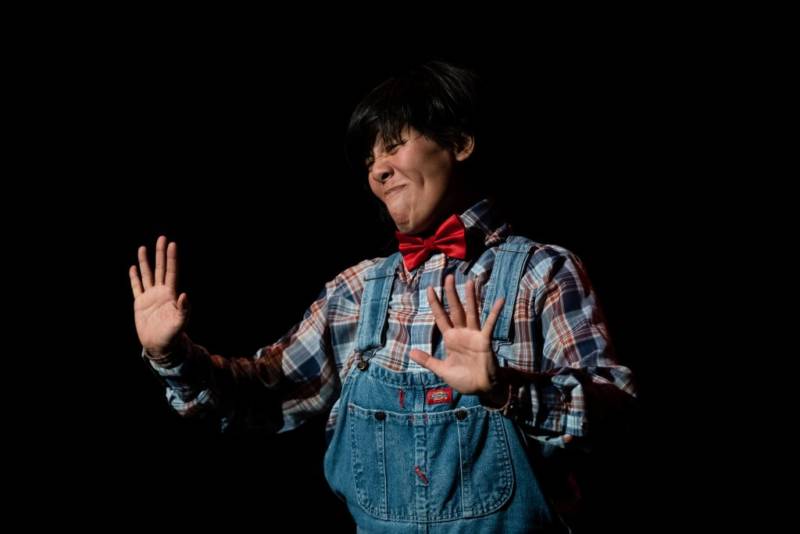The last Chinatown of Santa Cruz disappeared after the great San Lorenzo River flood of 1955, known as the “Christmas Flood” because it hit on December 22 of that year. Despite the fact there were four Chinatowns in Santa Cruz, they all disappeared into history, destroyed by flood and fire, their inhabitants scattered to other places more welcoming.
An exhibition called Guided by Ghosts brings that story back to life on the walls of the Santa Cruz Museum of Art and History. Chinese-American artist Tessa Hulls weaves multiple strands of history together with photographs, newspaper clippings, and water colors. It looks like a graphic novel. (As it happens, Hulls, who’s home base is in Seattle, has gone off the grid to finish a graphic novel focused on related material.)
At MAH, Hulls has put up a giant, wall-to-wall timeline with a color-coded key: maroon for “Tessa’s Story,” aqua green for the “Monterey Bay Region,” and yellow for “National/International,” starting with the first Spanish Galleon to cross the Pacific from the Philippines in 1565.

The timeline pops with quotes from people like George Ow, a kind of unofficial mayor for this community of ghosts. Hulls quotes him saying, “In Chinese folklore, if something is not settled during a lifetime, you have hungry ghosts, like angry spirits. By acknowledging these spirits, we’re kind of like feeding them.”
Ow, who grew up in that last Chinatown by the river, said the spirits would approve of Hulls joining the short list of those who’ve honored the history of Chinese-Americans in the Santa Cruz area. Ow’s uncle, George Lee, published a seminal collection of photographs, Chinatown Dreams. Historian Sandy Lyden wrote Chinese Gold: The Chinese in the Monterey Bay Region.




